Introduction
The size of the camera sensor and the focal length of your telescope are the two most important factors when considering the amount of sky, you can capture on a particular sensor assuming no optics between the telescope objective and the camera sensor.
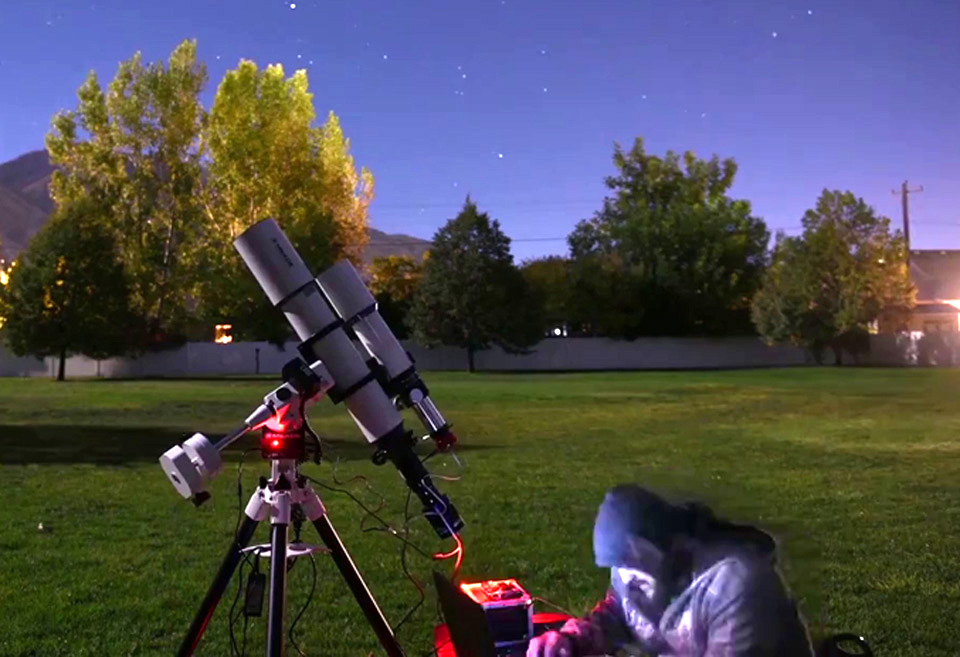
Photograph by Richard Keele.
Calculating the size of the projected image
The size of the projected image given a certain focal length can be calculated by the following formula.
Projected Image Size (mm) = angular size (arcseconds) X focal length (mm) / 4,144.0
For example, an object 1800 arcseconds in diameter like the Moon in a telescope with a focal length of 1000mm will project an image of the Moon on the sensor 17.5mm in size.
1 degree = 60 arcminutes, 1 arcminute = 60 arcseconds, 1 degree = 3600 arcseconds
The angular size of various deep sky objects can be found in star charts, computer planetarium applications and various books. This information is also readily available on the Internet, simply use your favourite search engine with the name of the object in question and the phrase "angular size", i.e., M42 angular size.
Barlows and focal reducers can be used to change the focal length of your telescope which in turn will affect the field of view and size of the projected image on the sensor.
Sensor size
When imaging the Moon, Sun and deep sky objects in general larger sensors offer a huge advantage. The following figure shows the relative size of various sensor formats for comparison purposes.
Larger sensors are equally useful when guiding and auto-guiding, also when using off-axis guiders.
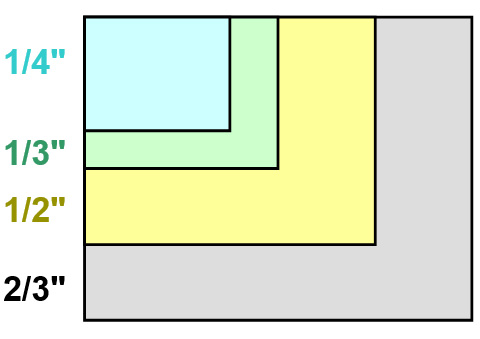
Relative sensor sizes. Diagram not drawn to scale.
Planetary imaging
For planetary imaging where capturing hundreds of frames in the minimum amount of time is important smaller sensors are generally preferred to larger higher resolution sensors. The small sensor size is not a real issue as the projected image of the planet will be considerably smaller that the size of say a 1/4-inch sensor.
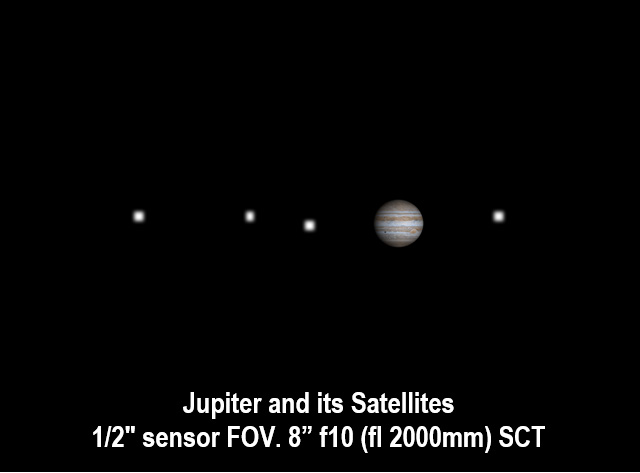
Relative positions of planet Jupiter and its moons.
Solar and Lunar imaging
Sensor size becomes more important when imaging the Sun or the Moon especially when capturing the whole object is a requirement. Typically, an 80mm refractor at f7 will accommodate both the Sun and Moon on a 1/2-inch sensor.
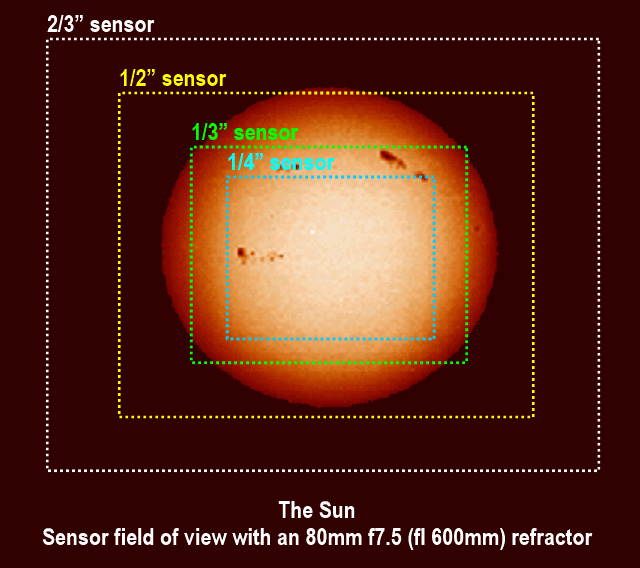
The Sun and the relative camera sensor sizes.
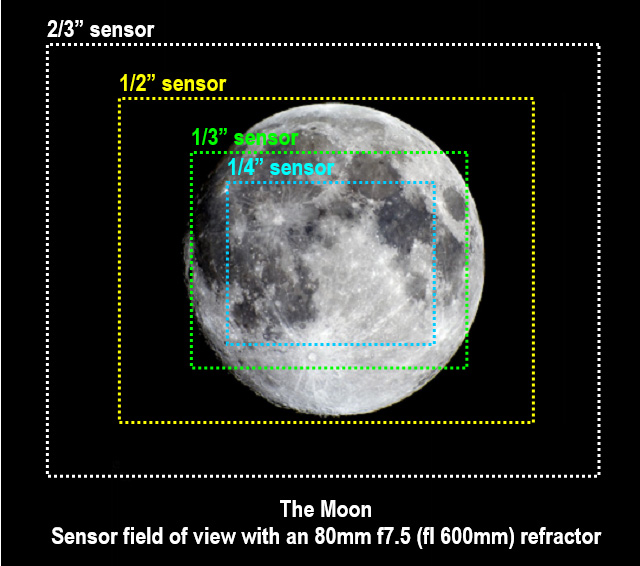
The Moon and the relative camera sensor sizes.
Deep sky imaging
Larger sensors are more applicable to deep sky imaging as a large number of very interesting DSOs will not fit on smaller sensors. The following images show examples of deep sky objects captured at prime focus with possibly the two most popular optical tubes, an 80mm f7.5 refractor and 8” f10 ACF / SCT.
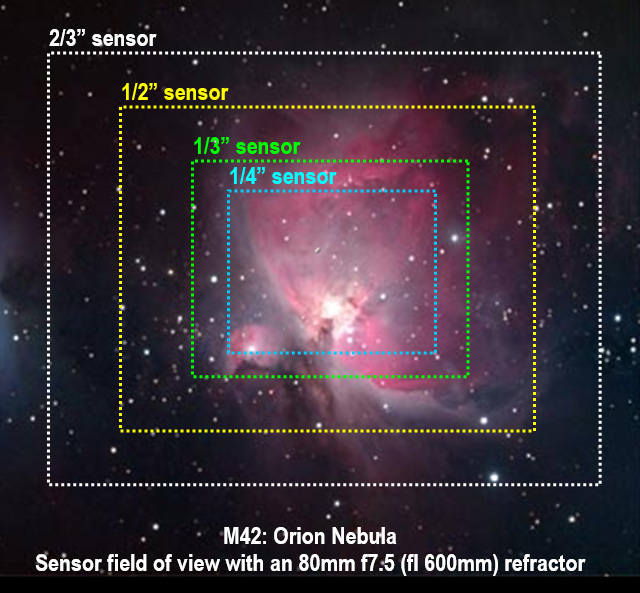
The Orion nebula and the relative camera sensor sizes.
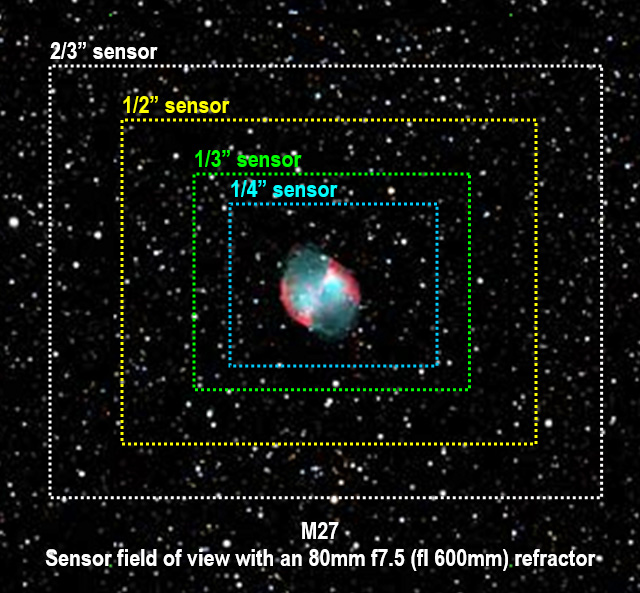
Relative camera sensor sizes at 600mm focal length.
The images above and below show the same deep sky object photographed at focal lengths of 600mm and 2000mm using two very popular optical tubes at focal lengths of 600mm and 2000mm.
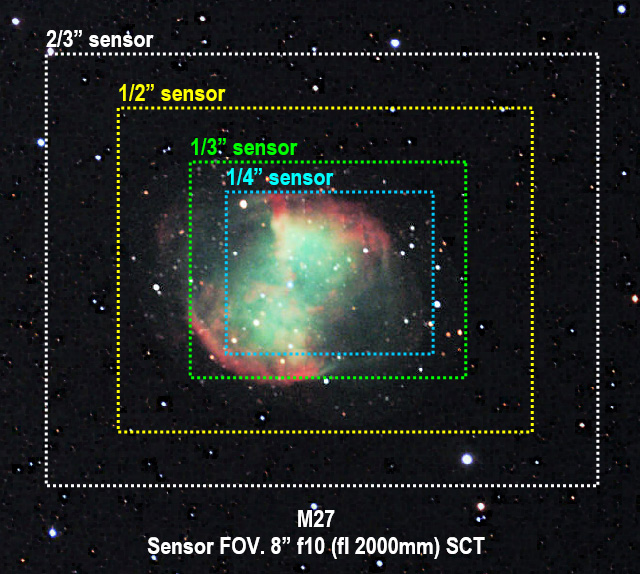
Relative camera sensor sizes at 2,000mm focal length.
The image below shows the amount of data that can be captured with the same arbitrary scope but with different size sensors at higher magnifications and longer focal lengths.
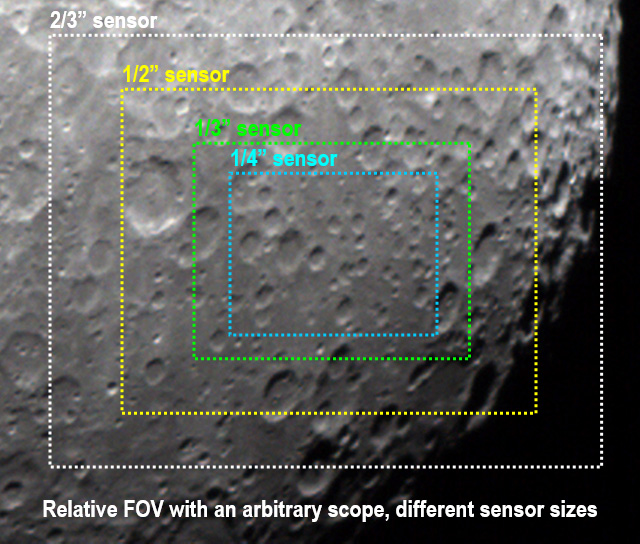
Relative camera sensor sizes at a long focal length.
Summary
Larger sensors are generally preferable to smaller lower resolution sensors and are ideal for deep sky, Lunar and Solar imaging. For planetary imaging smaller sensors will perform as well and will stream data to the PC at higher speeds depending on their resolution. These higher speeds enable the successive capture of hundreds of frames that can later be stacked to produce a single high-quality image.
When imaging planets the sensor size advantage becomes irrelevant where in deep sky imaging larger sensors are the way to go. For deep sky imaging the sensor will also need to be cooled to minimise thermal noise and sealed to protect it for moisture which can damage the sensor and camera.
Related topics:
how-to guide, astrophotography, article









